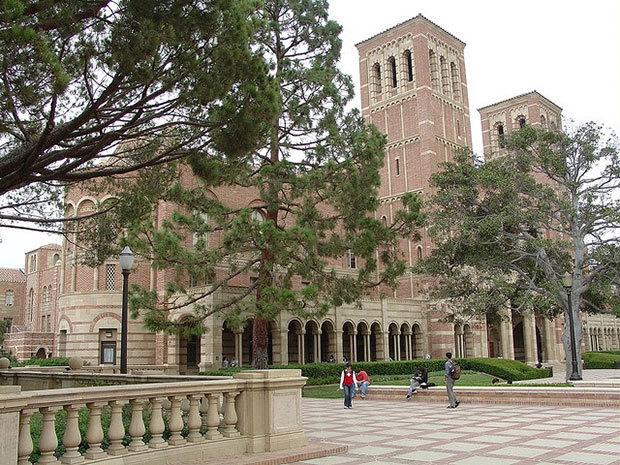Higher UC tuition or more state funding — where would state funds go?

by Adolfo Guzman-Lopez
There’s a tug of war between California’s governor and the president of the state’s prestigious University of California over nearly $100 million in additional state funds the university system argues it needs next year.
For his part, Gov. Jerry Brown believes university officials should make do with his planned 4 percent funding increase of $119 million for 2015-2016.
UC President Janet Napolitano, herself a former governor, counters the university system needs at least $97.7 million more, on top of the 4 percent increase, to maintain the university system’s high quality and open the university to more California students.
Napolitano’s request comes with an “or else.” If the state doesn’t pony up the extra funds, she plans to carry out tuition increases of up to 5 percent in each of three years.
The tuition hikes would dissolve an understanding between UC and the governor to freeze student tuition. The governor promised that tuition would not be raised when he campaigned for a 2012 state tax increase to help fund education.
Both sides spent a significant part of a November UC regents meeting discussing how the public university would use extra funds from tuition hikes under a $459 million spending plan for the next school year.
“With this plan we can invest in faculty,” Napolitano said. “This means we can increase course selection, course availability. We can speed time to graduation, and better support graduate as well as undergraduate education.”
Specifically, the UC 2015-2016 budget calls for expenditures of $94.9 million for financial aid and enrollment growth that includes 1,025 new resident undergraduates at each campus; $60 million to reduce student-faculty ratios and close faculty salary gaps, among other issues; $125.4 million for mandatory expenses that cover retirement plan payments, health benefits and other required compensation; and $178.7 million for high-priority costs such as planned compensation increases of 3 percent, deferred maintenance and capital improvements.
Taken together, the salary and benefit costs along with the projected compensation increase amount to over 51 percent of the spending plan. Still, the nonpartisan think tank, Public Policy Institute of California, said it concluded faculty salaries and benefits for both the UC and California State University systems have not increased significantly over the past 20 years.
Instead, the institute said recent tuition increases have been driven by significant reductions in state support for higher education. Analysts at the California Budget Project found UC tuition and fees paid by students and parents have more than quadrupled since 1990-1991, while state general fund spending per student has recently been at or near its lowest point in more than three decades.
Brown, who sits on the regents board and attended the November meeting, contends the UC system hasn’t been frugal enough. “I don’t think you considered alternatives to the structure over time that could actually lower your costs while increasing access and improving quality,” he told the UC regents.
Where would the money go?
If President Napolitano carries out the tuition increases, UCLA officials said their campus would get about $38 million in additional funding next year. Its resident undergraduate tuition and fees, currently $12,192, would rise to as high as $15,564, although 55 percent of California students get free tuition through financial aid and scholarships.
Hiring faculty is at the top of campus administrators’ needs list.
“We’ve committed $53 million dollars in state money, tuition money, and other university sources for support of this increased demand of undergraduate teaching,” said UCLA Chief Financial Officer Steven Olsen.
“We do need that in order to make sure classroom sizes are not too large in terms of the number of students and we have the type of quality and the numbers of instructors needed to make sure students are making progress toward their degrees,” he said.
UC campus officials are preparing two scenarios. Under one plan, they would receive the already proposed $119 million from the state and at least $97.7 million from next year’s student tuition increase.
Under the second plan, if tuition hikes do not materialize, the university will receive only $119 million from the state. For UCLA alone, Olsen said it amounts to about $16 million next year. That scenario, the university contends, would mean fewer seats for in-state students, fewer dollars for financial aid, delays in graduation, and a negative impact on the quality of education.
What if UC lives with smaller budget
The governor insists the UC system can live with the increase it’s already on track to receive under his preliminary budget plan.
“The governor is a supporter of higher education and has committed for the past two years to guaranteed year-over-year increases in general fund support of UC and CSU,” said Brown’s finance spokesman, H.D. Palmer.
Palmer said the funding plan Brown and UC agreed on increases the university system’s funding by $510 million from the 2014 through 2017 fiscal years.
[Source]: scpr.org


